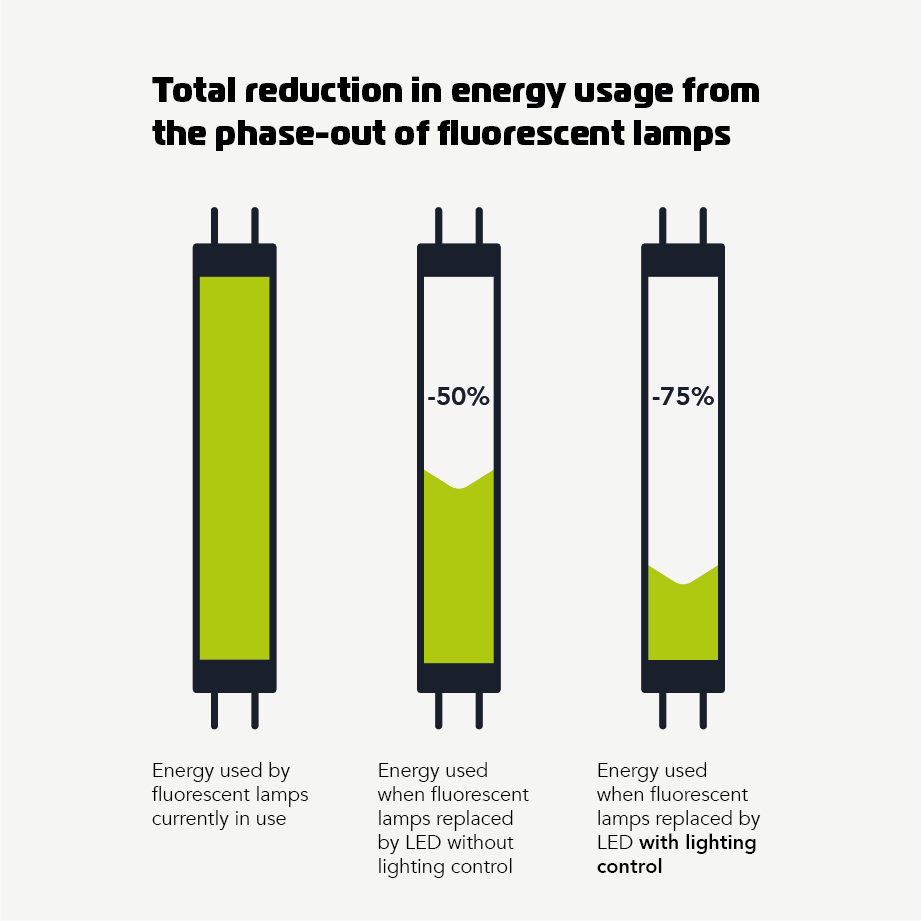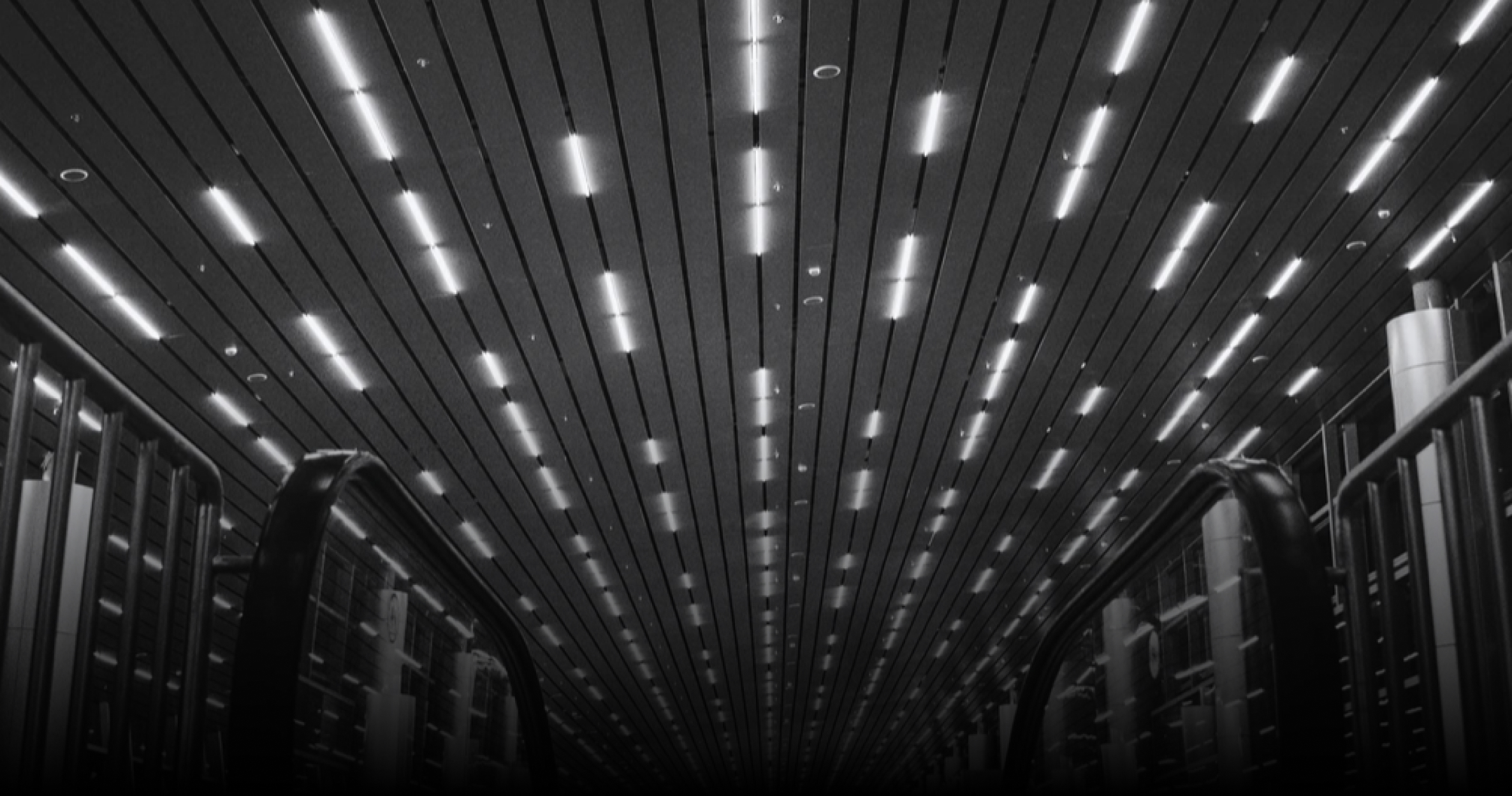EU ban on fluorescent lighting – maximize energy savings with wireless control
You are no longer able to buy fluorescent tubes and lamps within the European Union so now is the time to transition to more energy-efficient wireless lighting control.
From August 24, 2023, under the Restriction of Hazardous Substances (RoHS) Directive, it became forbidden to produce or import fluorescent tubes and lamps inside the EU.
There are two major reasons why fluorescent lights have been banned:
1. Mercury
Fluorescent lamps contain mercury which is a toxic element. The use of mercury in products has been banned since 2009 but until now, the small amount used in certain lamps has been allowed. RoHS has now removed this exception.
The three most common types of lamps containing mercury are:
- T5 linear fluorescent
- T8 linear fluorescent
- Pin-based compact fluorescents
2. Energy Consumption
The EU has committed to cut emissions by a minimum of 55% by 2030 with the goal of becoming the first area to achieve climate neutrality by 2050. Since fluorescent lamps are so energy-demanding, their phase-out is an important step towards reaching that goal.
African countries have also proposed their own ban on fluorescent lamps.
Transitioning to Energy-Efficient Lighting
A great many buildings, from warehouses and factories to schools and museums, currently have fluorescent lights which will need to be replaced sooner or later.
The most attractive alternative is LED lamps which, compared to fluorescent tubes, have significantly lower energy consumption, a longer lifespan and do not contain mercury.
- LED lights use 50-80% less energy than fluorescent lamps
- LED lights can last anywhere between two to four times longer than fluorescent
- LED lights do not contain any harmful chemicals
Wireless Lighting Control = Even Lower Energy Costs
Swapping to LED lights is a clear energy-saving strategy, but you can enjoy the benefits of even greater cost reductions with wireless lighting control.
This technology replaces the cable by converting a wired installation into a smart wireless network and adding full wireless control.

Through a wireless lighting network, users can remotely control and monitor lighting fixtures, adjust brightness levels, set scenes, and create schedules or zones for efficient energy management.
The Benefits of Wireless Lighting Control
This means buildings can upgrade old, manual on/off lighting to a smarter form of lighting the strength of which can be set according to their needs. Since this can all be done without having additional cables installed, this avoids any disruption to the business and provides an even more efficient way of managing energy consumption.
For contractors and electricians, upgrade and retrofit projects become simpler and quicker. Extra luminaires can be added to the network without having to lay a single new cable and commissioning takes minutes not hours.
Sources
- EU Commission adopts regulation to ban all fluorescent lighting by September 2023, European Council for an Energy Efficient Economy
- Amendment to the RoHS Directive – everything you need to know, Watt24
- Attention, end users: Europe is banning fluorescent lighting, LEDs Magazine
- Restriction of Hazardous Substances in Electrical and Electronic Equipment (RoHS), European Commission



